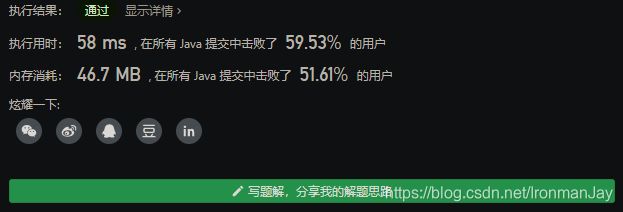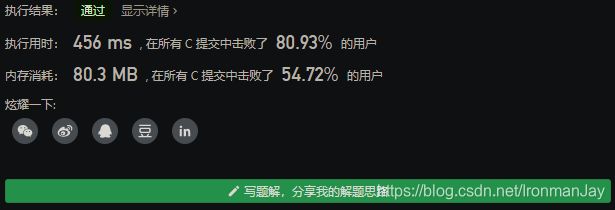- 算法题(98):大数加法
被AI抢饭碗的人
算法题算法
审题:本题需要我们解决大数加法,大数直接运算会超出范围,所以我们需要转换成字符串一位位进行计算思路:方法一:高精度加法我们将两个大数的每一个位分别计算,然后头插到answer字符串中即可解题:1.由于我们是从个位开始计算,而字符串的存储size-1的位置才是个位的位置,我们就把j和i初始化为size-1.2.当有进位或两个大数还有数据的时候,我们进行大数加法。3.字符串的头插可以使用=和+号实现,
- Elastic Stack 8.16.0 日志收集平台的搭建
JingAi_jia917
ElastisearchLogstashFilebeatKibanaElasticstackELK日志平台
简介1.1ELK介绍ELK是Elasticsearch、Logstash、Kibana三款开源工具的首字母缩写,构成了一套完整的日志管理解决方案,主要用于日志的采集、存储、分析与可视化。1)Logstash:数据管道工具,负责从多种来源(如文件、数据库、消息队列)采集日志,进行过滤、格式化后输出到目标(如Elasticsearch);2)Elasticsearch:分布式实时搜索与
- 订单管理系统,大学生数据结构期末作业/C语言实践作业
陌路物是人非
排序算法数据结构算法
任务:订单管理系统的设计与实现设计并实现一个订单管理系统界面分成两部分,分别是管理员和用户的界面主要功能:用户:(1)用户的登录及注册(2)用户信息修改(3)购买物品(4)充值(5)升序排序(按金额)物品管理员:(1)显示所有订单(2)插入订单信息(3)删除订单信息(4)排序订单(快排按编号)(5)统计订单信息(6)添加物品注意事项:一共需要建立4个文件(key.txt、物品清单.txt、用户信息
- Python3 【项目实战】深度解析:赛跑成绩统计分析工具
李智 - 重庆
Python精讲精练-从入门到实战python案例学习编程技巧时间处理项目实战
Python3【项目实战】深度解析:赛跑成绩统计分析工具一、项目概述1.开发背景:田径比赛的成绩统计需要快速准确的计算选手成绩,传统人工计时和统计效率低且易出错。本工具通过程序化处理赛跑数据,自动计算各选手成绩及整体统计指标,主要应用于:学校运动会成绩实时统计田径锦标赛的自动化成绩公示运动员训练数据分析2.技术定位:时间数据处理与统计计算的典型案例字典数据结构的实践应用面向过程编程的教学范例二、项
- kaggle-ISIC 2024 - 使用 3D-TBP 检测皮肤癌-学习笔记
supernova121
学习笔记
问题描述:通过从3D全身照片(TBP)中裁剪出单个病变来识别经组织学确诊的皮肤癌病例数据集描述:图像+临床文本信息评价指标:pAUC,用于保证敏感性高于指定阈值下的AUC主流方法分析(文本)基于CatBoost、LGBM和XGBoost三者的组合,为每个算法创建了XX个变体,总共XX个模型,进行集成学习。CatBoost在传统梯度提升决策树(GBDT)基础上,引入了一系列关键技术创新,以提升处理类
- pyhon基于django/flask网上摄影工作室Django-SpringBoot-php-Node.js-flask
QQ_511008285
djangoflaskspringbootphppythonlaravelnode.js
目录技术栈介绍具体实现截图系统设计研究方法:设计步骤设计流程核心代码部分展示研究方法详细视频演示试验方案论文大纲源码获取/详细视频演示技术栈介绍Django-SpringBoot-php-Node.js-flask本课题的研究方法和研究步骤基本合理,难度适中,本选题是学生所学专业知识的延续,符合学生专业发展方向,对于提高学生的基本知识和技能以及钻研能力有益。该学生能够在预定时间内完成该课题的设计。
- 【C++】栈的基础语法详解
MAX20131115
c++算法开发语言数据结构其他
栈是C++中的一种基础容器,有“先进先出”的原则。1.定义一个栈stacks;栈的顺序入栈(1)栈中:1入栈(2)栈中:12入栈(3)栈中:123出栈栈中:12出栈栈中:1出栈栈中:无2.增加/删除(1).增加(入栈)增加需要用到‘push’函数(万能头文件中包含栈的函数)用法:intx;cin>>x;s.push(x);(2).删除(出栈)删除需要用到pop函数Tip:只能删除最先进来的数据,空
- 智能化开发新时代:DeepSeek加持下的编程革命
MoonbeamOwl67
最新接入DeepSeek-V3模型,点击下载最新版本InsCodeAIIDE标题:智能化开发新时代:DeepSeek加持下的编程革命在当今快速发展的科技时代,软件开发已经成为推动社会进步的重要动力。然而,对于许多开发者而言,编写高质量的代码仍然是一项充满挑战的任务。从复杂的算法设计到繁琐的调试过程,每一个环节都需要耗费大量的时间和精力。而随着人工智能技术的迅猛发展,一种全新的编程方式正在悄然改变这
- 【JCR一区级】被囊群算法TSA-Transformer-GRU负荷数据回归预测【含Matlab源码 6309期】
Matlab武动乾坤
matlab
Matlab武动乾坤博客之家
- 解决约束多目标优化问题的新方法:MOEA/D-DAE算法深度解析
木子算法
多目标优化人工智能算法多目标人工智能
解决约束多目标优化问题的新方法:MOEA/D-DAE算法深度解析在工程优化、机器学习等众多领域,约束多目标优化问题(CMOPs)广泛存在。传统方法在处理这类问题时,常因可行区域不连通或约束违反局部极小点陷入停滞。近期,IEEETransactionsonEvolutionaryComputation上的一篇论文提出了一种新颖的解决方案——MOEA/D-DAE算法,通过结合检测-逃逸策略(DAE)和
- 深入探究YOLO系列的骨干网路
编码实践
YOLO深度学习计算机视觉
深入探究YOLO系列的骨干网路YOLO系列是目标检测领域中非常知名的算法。其通过将整个图像作为输入,并且直接在图像上通过一个单独的神经网络输出每个检测框的类别预测和边界框信息。为了更好地理解YOLO系列,我们需要先了解它所使用的骨干网路。骨干网络是深度学习模型中的核心部分,负责提取图像的特征。如今常用的骨干网络有VGG、ResNet和MobileNet等。YOLO系列算法采用的是Darknet骨干
- 基于AI算法实现的情感倾向分析的方法
程序员奇奇
计算机毕设人工智能算法
完整代码:https://download.csdn.net/download/pythonyanyan/87430621背景目前,情感倾向分析的方法主要分为两类:一种是基于情感词典的方法;一种是基于机器学习的方法,如基于大规模语料库的机器学习。前者需要用到标注好的情感词典,英文的词典有很多,中文主要有知网整理的情感词典Hownet和台湾大学整理发布的NTUSD两个情感词典,还有哈工大信息检索研究
- AI开发 - 算法基础 递归 的概念和入门(三)递归的进阶学习
minstbe
PythonAI应用与观察算法学习深度优先
前面我们通过2篇文章,一起了解了递归,以及使用递归来解决汉诺塔问题。今天我们在这个基础上,进一步地熟悉和学习递归。这篇学习笔记将涵盖递归的基本概念、应用、优化技巧、陷阱及与迭代的对比,并通过具体的Python代码示例和大家一起来深入理解递归的使用。一、巩固基础1.递归的概念递归,简单来说就是函数自己调用自己。听起来有点绕,但其实就像俄罗斯套娃,一层套一层,直到遇到最小的那个娃娃(基线条件)才停止。
- 机器学习算法实战——天气数据分析(主页有源码)
喵了个AI
机器学习实战机器学习算法数据分析
✨个人主页欢迎您的访问✨期待您的三连✨✨个人主页欢迎您的访问✨期待您的三连✨✨个人主页欢迎您的访问✨期待您的三连✨1.引言天气数据分析是气象学和数据科学交叉领域的一个重要研究方向。随着大数据技术的发展,气象数据的采集、存储和分析能力得到了显著提升。机器学习算法在天气数据分析中的应用,不仅能够提高天气预报的准确性,还能为气候研究、灾害预警等提供有力支持。本文将介绍机器学习在天气数据分析中的应用,探讨
- 垃圾收集算法
zhangpeng455547940
Java数据结构与算法设计算法jvmjava
常见算法引用计数记录每个对象的引用次数,当引用次数为零时回收对象标记-清除根引用可达分析、扫描内存回收不可达对象分代回收基于观察到大多数对象生命周期较短,而少数对象生命周期较长的优化算法空闲回收在CPU空闲时运行垃圾回收器,以减少对程序执行的影响增量回收将垃圾回收任务分解为多个小步骤,逐步完成。可以避免一次性垃圾回收导致的长时间暂停,从而减少对程序性能的影响Java最新垃圾回收算法Java最新垃圾
- 【论文阅读方法】沐神课程:如何读论文
晴空对晚照
论文阅读论文阅读
一篇论文的一般结构titleabstractintroductionmethodexperienceconclusion三明治论文阅读法第一遍:海选title+abstract+conclusion——确定要不要读第二遍:精读对整个文章过一遍,知道每一块在做什么可以从标题开始读到最后,注意不用咬文嚼字,不要太细节,公式、证明等很细节的部分可以忽略掉重点弄清楚每一个图表,算法在做什么,x轴y轴每一个
- KNN算法性能优化技巧与实战案例
可问 可问春风
算法性能优化
KNN算法性能优化技巧与实战案例K最近邻(KNN)在分类和回归任务中表现稳健,但其计算复杂度高、内存消耗大成为IT项目中的主要瓶颈。以下从算法优化、数据结构、工程实践三方面深入解析性能提升策略,并附典型应用案例。一、核心性能瓶颈维度挑战描述计算复杂度单次预测需计算全部训练样本距离,时间复杂度为(n=样本数,d=特征维度)内存占用需全量存储训练数据,大规模数据集难以加载高维灾难高维数据中距离计算失去
- 2025华为OD机试(Python/JS/C/C++)真题【E卷+A卷+B卷+C卷+D卷】目录
哪 吒
搬砖工逆袭Java架构师华为odpythonjavascript
专栏导读本专栏收录于《华为OD机试真题(Python/JS/C/C++)》。刷的越多,抽中的概率越大,私信哪吒,备注华为OD,加入华为OD刷题交流群,每一题都有详细的答题思路、详细的代码注释、3个测试用例、为什么这道题采用XX算法、XX算法的适用场景,发现新题目,随时更新。2024年8月14日,华为官方已经将华为OD机试(D卷)切换为E卷。目前正在考的是E卷,按照华为OD往常的操作,E卷题目是由往
- 华为OD机试 - 简单的解压缩算法 - 栈(Python/JS/C/C++ 2024 E卷 100分)
哪 吒
华为odpythonjavascript
华为OD机试2024E卷题库疯狂收录中,刷题点这里专栏导读本专栏收录于《华为OD机试真题(Python/JS/C/C++)》。刷的越多,抽中的概率越大,私信哪吒,备注华为OD,加入华为OD刷题交流群,每一题都有详细的答题思路、详细的代码注释、3个测试用例、为什么这道题采用XX算法、XX算法的适用场景,发现新题目,随时更新。一、题目描述现需要实现一种算法,能将一组压缩字符串还原成原始字符串,还原规则
- 华为OD机试 - 光伏场地建设规划 - 动态规划(Python/JS/C/C++ 2024 B卷 100分)
哪 吒
华为od动态规划python
华为OD机试2024E卷题库疯狂收录中,刷题点这里专栏导读本专栏收录于《华为OD机试真题(Python/JS/C/C++)》。刷的越多,抽中的概率越大,私信哪吒,备注华为OD,加入华为OD刷题交流群,每一题都有详细的答题思路、详细的代码注释、3个测试用例、为什么这道题采用XX算法、XX算法的适用场景,发现新题目,随时更新。一、题目描述祖国西北部有一片大片荒地,其中零星的分布着一些湖泊,保护区,矿区
- 华为OD机试 - 自守数 - 数学问题(Python/JS/C/C++ 2024 B卷 100分)
哪 吒
华为odpythonjavascript
华为OD机试2024E卷题库疯狂收录中,刷题点这里专栏导读本专栏收录于《华为OD机试真题(Python/JS/C/C++)》。刷的越多,抽中的概率越大,私信哪吒,备注华为OD,加入华为OD刷题交流群,每一题都有详细的答题思路、详细的代码注释、3个测试用例、为什么这道题采用XX算法、XX算法的适用场景,发现新题目,随时更新。一、题目描述自守数是指一个数的平方的尾数等于该数自身的自然数。例如:252=
- 华为OD机试 - 最长回文子串(Python/JS/C/C++ 2024 B卷 100分)
哪 吒
华为odpythonjavascript
华为OD机试2024E卷题库疯狂收录中,刷题点这里专栏导读本专栏收录于《华为OD机试真题(Python/JS/C/C++)》。刷的越多,抽中的概率越大,私信哪吒,备注华为OD,加入华为OD刷题交流群,每一题都有详细的答题思路、详细的代码注释、3个测试用例、为什么这道题采用XX算法、XX算法的适用场景,发现新题目,随时更新。一、题目描述给定一个仅包含小写字母的字符串,求它的最长回文子串的长度。所谓回
- 华为OD机试 - 高矮个子排队 - 滑动窗口(Python/JS/C/C++ 2024 B卷 100分)
哪 吒
华为odpythonjavascript
华为OD机试2024E卷题库疯狂收录中,刷题点这里专栏导读本专栏收录于《华为OD机试真题(Python/JS/C/C++)》。刷的越多,抽中的概率越大,私信哪吒,备注华为OD,加入华为OD刷题交流群,每一题都有详细的答题思路、详细的代码注释、3个测试用例、为什么这道题采用XX算法、XX算法的适用场景,发现新题目,随时更新。一、题目描述现在有一队小朋友,他们高矮不同,我们以正整数数组表示这一队小朋友
- 华为OD机试 - 数组拼接(Python/JS/C/C++ 2024 B卷 100分)
哪 吒
华为odpythonjavascript
华为OD机试2024E卷题库疯狂收录中,刷题点这里专栏导读本专栏收录于《华为OD机试真题(Python/JS/C/C++)》。刷的越多,抽中的概率越大,私信哪吒,备注华为OD,加入华为OD刷题交流群,每一题都有详细的答题思路、详细的代码注释、3个测试用例、为什么这道题采用XX算法、XX算法的适用场景,发现新题目,随时更新。一、题目描述现在有多组整数数组,需要将它们合并成一个新的数组。合并规则,从每
- 华为OD机试 - 观看文艺汇演问题 - 滑动窗口(Python/JS/C/C++ 2024 B卷 200分)
哪 吒
华为odpythonjavascript
华为OD机试2024E卷题库疯狂收录中,刷题点这里专栏导读本专栏收录于《华为OD机试真题(Python/JS/C/C++)》。刷的越多,抽中的概率越大,私信哪吒,备注华为OD,加入华为OD刷题交流群,每一题都有详细的答题思路、详细的代码注释、3个测试用例、为什么这道题采用XX算法、XX算法的适用场景,发现新题目,随时更新。一、题目描述为庆祝中国共产党成立100周年,某公园将举行多场文艺汇演,很多演
- 华为OD机试 - 核酸检测人员安排 - 动态规划(Python/JS/C/C++ 2024 B卷 200分)
哪 吒
华为od动态规划python
华为OD机试2024E卷题库疯狂收录中,刷题点这里专栏导读本专栏收录于《华为OD机试真题(Python/JS/C/C++)》。刷的越多,抽中的概率越大,私信哪吒,备注华为OD,加入华为OD刷题交流群,每一题都有详细的答题思路、详细的代码注释、3个测试用例、为什么这道题采用XX算法、XX算法的适用场景,发现新题目,随时更新。一、题目描述在系统、网络均正常的情况下组织核酸采样员和志愿者对人群进行核酸检
- 华为OD机试 - 删除字符串中出现次数最少的字符(Python/JS/C/C++ 2024 B卷 100分)
哪 吒
华为odpythonjavascript
华为OD机试2024E卷题库疯狂收录中,刷题点这里专栏导读本专栏收录于《华为OD机试真题(Python/JS/C/C++)》。刷的越多,抽中的概率越大,私信哪吒,备注华为OD,加入华为OD刷题交流群,每一题都有详细的答题思路、详细的代码注释、3个测试用例、为什么这道题采用XX算法、XX算法的适用场景,发现新题目,随时更新。一、题目描述删除字符串中出现次数最少的字符,如果多个字符出现次数一样则都删除
- 华为OD机试 - 统计每个月兔子的总数(Python/JS/C/C++ 2023 B卷 100分)
哪 吒
华为odpythonjavascript
华为OD机试2024E卷题库疯狂收录中,刷题点这里专栏导读本专栏收录于《华为OD机试真题(Python/JS/C/C++)》。刷的越多,抽中的概率越大,私信哪吒,备注华为OD,加入华为OD刷题交流群,每一题都有详细的答题思路、详细的代码注释、3个测试用例、为什么这道题采用XX算法、XX算法的适用场景,发现新题目,随时更新。一、题目描述有一种兔子,从出生后第3个月起每个月都生一只兔子,小兔子长到第三
- 华为OD机试 - 磁盘容量排序 - 双指针(Python/JS/C/C++ 2023 B卷 100分)
哪 吒
华为odpythonjavascript
华为OD机试2024E卷题库疯狂收录中,刷题点这里专栏导读本专栏收录于《华为OD机试真题(Python/JS/C/C++)》。刷的越多,抽中的概率越大,私信哪吒,备注华为OD,加入华为OD刷题交流群,每一题都有详细的答题思路、详细的代码注释、3个测试用例、为什么这道题采用XX算法、XX算法的适用场景,发现新题目,随时更新。一、题目描述磁盘的容量单位常用的有M,G,T这三个等级,它们之间的换算关系为
- 华为OD机试 - 开心消消乐 - 并查集(Python/JS/C/C++ 2024 B卷 100分)
哪 吒
华为odpythonjavascript
华为OD机试2024E卷题库疯狂收录中,刷题点这里专栏导读本专栏收录于《华为OD机试真题(Python/JS/C/C++)》。刷的越多,抽中的概率越大,私信哪吒,备注华为OD,加入华为OD刷题交流群,每一题都有详细的答题思路、详细的代码注释、3个测试用例、为什么这道题采用XX算法、XX算法的适用场景,发现新题目,随时更新。一、题目描述给定一个N行M列的二维矩阵,矩阵中每个位置的数字取值为0或1。矩
- mongodb3.03开启认证
21jhf
mongodb
下载了最新mongodb3.03版本,当使用--auth 参数命令行开启mongodb用户认证时遇到很多问题,现总结如下:
(百度上搜到的基本都是老版本的,看到db.addUser的就是,请忽略)
Windows下我做了一个bat文件,用来启动mongodb,命令行如下:
mongod --dbpath db\data --port 27017 --directoryperdb --logp
- 【Spark103】Task not serializable
bit1129
Serializable
Task not serializable是Spark开发过程最令人头疼的问题之一,这里记录下出现这个问题的两个实例,一个是自己遇到的,另一个是stackoverflow上看到。等有时间了再仔细探究出现Task not serialiazable的各种原因以及出现问题后如何快速定位问题的所在,至少目前阶段碰到此类问题,没有什么章法
1.
package spark.exampl
- 你所熟知的 LRU(最近最少使用)
dalan_123
java
关于LRU这个名词在很多地方或听说,或使用,接下来看下lru缓存回收的实现
1、大体的想法
a、查询出最近最晚使用的项
b、给最近的使用的项做标记
通过使用链表就可以完成这两个操作,关于最近最少使用的项只需要返回链表的尾部;标记最近使用的项,只需要将该项移除并放置到头部,那么难点就出现 你如何能够快速在链表定位对应的该项?
这时候多
- Javascript 跨域
周凡杨
JavaScriptjsonp跨域cross-domain
- linux下安装apache服务器
g21121
apache
安装apache
下载windows版本apache,下载地址:http://httpd.apache.org/download.cgi
1.windows下安装apache
Windows下安装apache比较简单,注意选择路径和端口即可,这里就不再赘述了。 2.linux下安装apache:
下载之后上传到linux的相关目录,这里指定为/home/apach
- FineReport的JS编辑框和URL地址栏语法简介
老A不折腾
finereportweb报表报表软件语法总结
JS编辑框:
1.FineReport的js。
作为一款BS产品,browser端的JavaScript是必不可少的。
FineReport中的js是已经调用了finereport.js的。
大家知道,预览报表时,报表servlet会将cpt模板转为html,在这个html的head头部中会引入FineReport的js,这个finereport.js中包含了许多内置的fun
- 根据STATUS信息对MySQL进行优化
墙头上一根草
status
mysql 查看当前正在执行的操作,即正在执行的sql语句的方法为:
show processlist 命令
mysql> show global status;可以列出MySQL服务器运行各种状态值,我个人较喜欢的用法是show status like '查询值%';一、慢查询mysql> show variab
- 我的spring学习笔记7-Spring的Bean配置文件给Bean定义别名
aijuans
Spring 3
本文介绍如何给Spring的Bean配置文件的Bean定义别名?
原始的
<bean id="business" class="onlyfun.caterpillar.device.Business">
<property name="writer">
<ref b
- 高性能mysql 之 性能剖析
annan211
性能mysqlmysql 性能剖析剖析
1 定义性能优化
mysql服务器性能,此处定义为 响应时间。
在解释性能优化之前,先来消除一个误解,很多人认为,性能优化就是降低cpu的利用率或者减少对资源的使用。
这是一个陷阱。
资源时用来消耗并用来工作的,所以有时候消耗更多的资源能够加快查询速度,保持cpu忙绿,这是必要的。很多时候发现
编译进了新版本的InnoDB之后,cpu利用率上升的很厉害,这并不
- 主外键和索引唯一性约束
百合不是茶
索引唯一性约束主外键约束联机删除
目标;第一步;创建两张表 用户表和文章表
第二步;发表文章
1,建表;
---用户表 BlogUsers
--userID唯一的
--userName
--pwd
--sex
create
- 线程的调度
bijian1013
java多线程thread线程的调度java多线程
1. Java提供一个线程调度程序来监控程序中启动后进入可运行状态的所有线程。线程调度程序按照线程的优先级决定应调度哪些线程来执行。
2. 多数线程的调度是抢占式的(即我想中断程序运行就中断,不需要和将被中断的程序协商)
a)
- 查看日志常用命令
bijian1013
linux命令unix
一.日志查找方法,可以用通配符查某台主机上的所有服务器grep "关键字" /wls/applogs/custom-*/error.log
二.查看日志常用命令1.grep '关键字' error.log:在error.log中搜索'关键字'2.grep -C10 '关键字' error.log:显示关键字前后10行记录3.grep '关键字' error.l
- 【持久化框架MyBatis3一】MyBatis版HelloWorld
bit1129
helloworld
MyBatis这个系列的文章,主要参考《Java Persistence with MyBatis 3》。
样例数据
本文以MySQL数据库为例,建立一个STUDENTS表,插入两条数据,然后进行单表的增删改查
CREATE TABLE STUDENTS
(
stud_id int(11) NOT NULL AUTO_INCREMENT,
- 【Hadoop十五】Hadoop Counter
bit1129
hadoop
1. 只有Map任务的Map Reduce Job
File System Counters
FILE: Number of bytes read=3629530
FILE: Number of bytes written=98312
FILE: Number of read operations=0
FILE: Number of lar
- 解决Tomcat数据连接池无法释放
ronin47
tomcat 连接池 优化
近段时间,公司的检测中心报表系统(SMC)的开发人员时不时找到我,说用户老是出现无法登录的情况。前些日子因为手头上 有Jboss集群的测试工作,发现用户不能登录时,都是在Tomcat中将这个项目Reload一下就好了,不过只是治标而已,因为大概几个小时之后又会 再次出现无法登录的情况。
今天上午,开发人员小毛又找到我,要我协助将这个问题根治一下,拖太久用户难保不投诉。
简单分析了一
- java-75-二叉树两结点的最低共同父结点
bylijinnan
java
import java.util.LinkedList;
import java.util.List;
import ljn.help.*;
public class BTreeLowestParentOfTwoNodes {
public static void main(String[] args) {
/*
* node data is stored in
- 行业垂直搜索引擎网页抓取项目
carlwu
LuceneNutchHeritrixSolr
公司有一个搜索引擎项目,希望各路高人有空来帮忙指导,谢谢!
这是详细需求:
(1) 通过提供的网站地址(大概100-200个网站),网页抓取程序能不断抓取网页和其它类型的文件(如Excel、PDF、Word、ppt及zip类型),并且程序能够根据事先提供的规则,过滤掉不相干的下载内容。
(2) 程序能够搜索这些抓取的内容,并能对这些抓取文件按照油田名进行分类,然后放到服务器不同的目录中。
- [通讯与服务]在总带宽资源没有大幅增加之前,不适宜大幅度降低资费
comsci
资源
降低通讯服务资费,就意味着有更多的用户进入,就意味着通讯服务提供商要接待和服务更多的用户,在总体运维成本没有由于技术升级而大幅下降的情况下,这种降低资费的行为将导致每个用户的平均带宽不断下降,而享受到的服务质量也在下降,这对用户和服务商都是不利的。。。。。。。。
&nbs
- Java时区转换及时间格式
Cwind
java
本文介绍Java API 中 Date, Calendar, TimeZone和DateFormat的使用,以及不同时区时间相互转化的方法和原理。
问题描述:
向处于不同时区的服务器发请求时需要考虑时区转换的问题。譬如,服务器位于东八区(北京时间,GMT+8:00),而身处东四区的用户想要查询当天的销售记录。则需把东四区的“今天”这个时间范围转换为服务器所在时区的时间范围。
- readonly,只读,不可用
dashuaifu
jsjspdisablereadOnlyreadOnly
readOnly 和 readonly 不同,在做js开发时一定要注意函数大小写和jsp黄线的警告!!!我就经历过这么一件事:
使用readOnly在某些浏览器或同一浏览器不同版本有的可以实现“只读”功能,有的就不行,而且函数readOnly有黄线警告!!!就这样被折磨了不短时间!!!(期间使用过disable函数,但是发现disable函数之后后台接收不到前台的的数据!!!)
- LABjs、RequireJS、SeaJS 介绍
dcj3sjt126com
jsWeb
LABjs 的核心是 LAB(Loading and Blocking):Loading 指异步并行加载,Blocking 是指同步等待执行。LABjs 通过优雅的语法(script 和 wait)实现了这两大特性,核心价值是性能优化。LABjs 是一个文件加载器。RequireJS 和 SeaJS 则是模块加载器,倡导的是一种模块化开发理念,核心价值是让 JavaScript 的模块化开发变得更
- [应用结构]入口脚本
dcj3sjt126com
PHPyii2
入口脚本
入口脚本是应用启动流程中的第一环,一个应用(不管是网页应用还是控制台应用)只有一个入口脚本。终端用户的请求通过入口脚本实例化应用并将将请求转发到应用。
Web 应用的入口脚本必须放在终端用户能够访问的目录下,通常命名为 index.php,也可以使用 Web 服务器能定位到的其他名称。
控制台应用的入口脚本一般在应用根目录下命名为 yii(后缀为.php),该文
- haoop shell命令
eksliang
hadoophadoop shell
cat
chgrp
chmod
chown
copyFromLocal
copyToLocal
cp
du
dus
expunge
get
getmerge
ls
lsr
mkdir
movefromLocal
mv
put
rm
rmr
setrep
stat
tail
test
text
- MultiStateView不同的状态下显示不同的界面
gundumw100
android
只要将指定的view放在该控件里面,可以该view在不同的状态下显示不同的界面,这对ListView很有用,比如加载界面,空白界面,错误界面。而且这些见面由你指定布局,非常灵活。
PS:ListView虽然可以设置一个EmptyView,但使用起来不方便,不灵活,有点累赘。
<com.kennyc.view.MultiStateView xmlns:android=&qu
- jQuery实现页面内锚点平滑跳转
ini
JavaScripthtmljqueryhtml5css
平时我们做导航滚动到内容都是通过锚点来做,刷的一下就直接跳到内容了,没有一丝的滚动效果,而且 url 链接最后会有“小尾巴”,就像#keleyi,今天我就介绍一款 jquery 做的滚动的特效,既可以设置滚动速度,又可以在 url 链接上没有“小尾巴”。
效果体验:http://keleyi.com/keleyi/phtml/jqtexiao/37.htmHTML文件代码:
&
- kafka offset迁移
kane_xie
kafka
在早前的kafka版本中(0.8.0),offset是被存储在zookeeper中的。
到当前版本(0.8.2)为止,kafka同时支持offset存储在zookeeper和offset manager(broker)中。
从官方的说明来看,未来offset的zookeeper存储将会被弃用。因此现有的基于kafka的项目如果今后计划保持更新的话,可以考虑在合适
- android > 搭建 cordova 环境
mft8899
android
1 , 安装 node.js
http://nodejs.org
node -v 查看版本
2, 安装 npm
可以先从 https://github.com/isaacs/npm/tags 下载 源码 解压到
- java封装的比较器,比较是否全相同,获取不同字段名字
qifeifei
非常实用的java比较器,贴上代码:
import java.util.HashSet;
import java.util.List;
import java.util.Set;
import net.sf.json.JSONArray;
import net.sf.json.JSONObject;
import net.sf.json.JsonConfig;
i
- 记录一些函数用法
.Aky.
位运算PHP数据库函数IP
高手们照旧忽略。
想弄个全天朝IP段数据库,找了个今天最新更新的国内所有运营商IP段,copy到文件,用文件函数,字符串函数把玩下。分割出startIp和endIp这样格式写入.txt文件,直接用phpmyadmin导入.csv文件的形式导入。(生命在于折腾,也许你们觉得我傻X,直接下载人家弄好的导入不就可以,做自己的菜鸟,让别人去说吧)
当然用到了ip2long()函数把字符串转为整型数
- sublime text 3 rust
wudixiaotie
Sublime Text
1.sublime text 3 => install package => Rust
2.cd ~/.config/sublime-text-3/Packages
3.mkdir rust
4.git clone https://github.com/sp0/rust-style
5.cd rust-style
6.cargo build --release
7.ctrl

